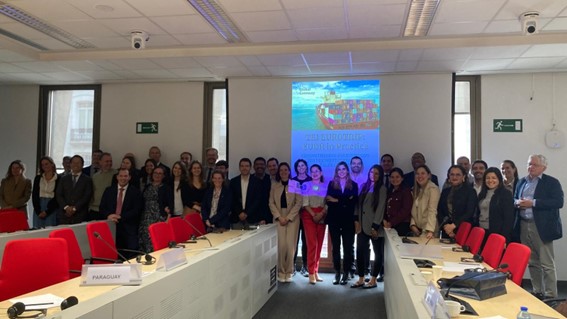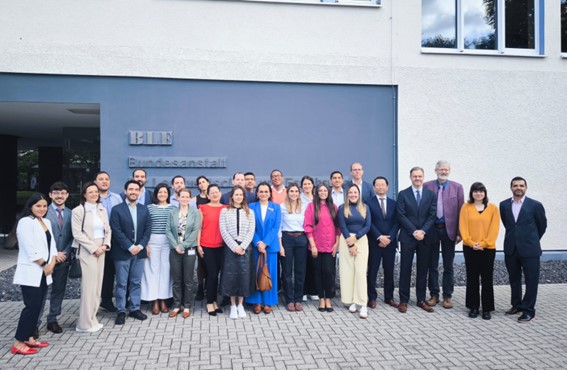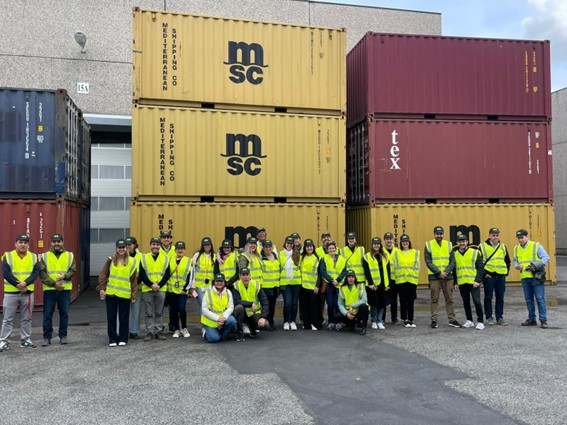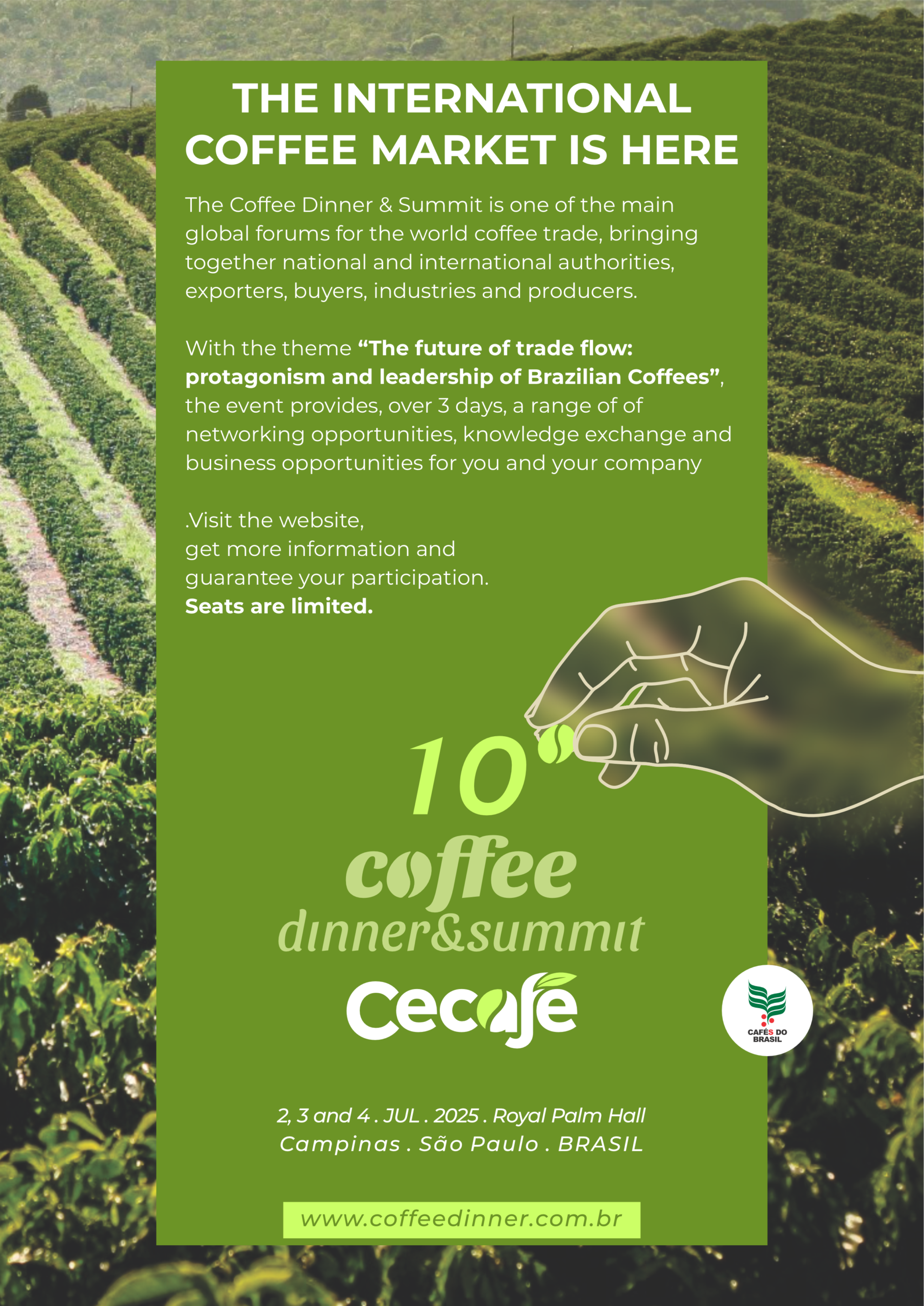Cecafé took part in a mission to Belgium and Germany to gather insights on the implementation process of the European Union regulation
On May 22, the European Commission published IMPLEMENTING REGULATION (EU) 2025/1093, which classifies all countries—including EU Member States—according to the risk that commodities within the scope of the EUDR produced in those countries are not deforestation-free as of December 31, 2020. Covered products include cocoa, coffee, soy, palm oil, timber, rubber, and cattle.
As established in the EUDR, countries were assigned low, standard, or high risk levels based on a range of criteria, including deforestation and forest degradation rates, agricultural land expansion, production trends, among others.
The risk classification determines the extent of the due diligence process that European companies must carry out across their supply chains, as well as the oversight of these procedures by the competent authorities of EU Member States.
Companies sourcing products from lowrisk countries may conduct a “simplified” due diligence process. While they will still be required to collect information from their suppliers (including geolocation of plots and adequately conclusive and verifiable evidence of compliance with EUDR legality and deforestation criteria), they will not be obligated to carry out the risk assessment and mitigation steps outlined in Articles 10 and 11 of the Regulation.
Regarding the scope of compliance checks to be conducted by the competent authorities of EU Member States on European companies, the country risk classification affects the percentage of economic operators subject to verification as follows: 1% for “low risk,” 3% for “standard risk,” and 9% for “high risk” (for countries in the high-risk category, competent authorities are also required to verify 9% of the volume of each relevant product).
When looking at the EUDR risk classification for coffee-producing countries—including several focused on specialty coffee production—Brazil ranked below competitors such as Vietnam, India, Costa Rica, the Philippines, Rwanda, Jamaica, Kenya, Yemen, South Africa, and Papua New Guinea, all of which were classified as low risk.

Defining the risk classification of countries was one of the steps the European Commission needed to complete to enable the operational rollout of the EUDR, starting on December 30, 2025. However, there is still significant uncertainty around how the regulation will be applied in practice—a reality that became clear during the mission “TEI Eurotrip: EUDR in Practice. Strengthening Partnerships for Deforestation-Free Value Chains,” in which Cecafé participated at the invitation of the European Commission, from May 26 to 30.
The mission was organized by the Team Europe Initiative (TEI) for deforestation-free supply chains, whose purpose is to build partnerships and provide support to partner countries—engaging both public and private stakeholders—aimed at enabling an inclusive
transition to sustainable, deforestation-free, and legal value chains.
The Zero Deforestation Hub serves as the secretariat of the TEI and is hosted by the Sustainable Agriculture for Forest Ecosystems (SAFE) program, led by GIZ.
The mission was one of the outreach activities of the TEI, designed to provide Latin American partners with first-hand insights into the practical implementation of the EUDR in collaboration with European stakeholders.
The initiative brought together 21 representatives from the public and private export sectors of coffee, soy, and cattle from Latin America (Argentina, Brazil, Colombia, Costa Rica, Ecuador, Guatemala, Honduras, Paraguay, and Peru) for meetings in Belgium and Germany with authorities and stakeholders involved in the implementation of the EUDR.
The agenda of the mission included meetings with the European Commission, the competent authorities of Belgium and Germany, the Belgian customs authority, representatives of European coffee, soy, and cattle importers, NGOs, and certification bodies operating in the EU.

Among the key insights gathered from the competent authorities (CAs) of Belgium and Germany are the following:
(i) The CAs aim to align their efforts and will adopt a pragmatic approach, at least during the first year of EUDR implementation, drawing on their experience from a decade of enforcing the EU Timber Regulation (EUTR). They emphasized that there is no intention to disrupt trade flows or hold shipments at ports. The focus is on reducing the bureaucratic burden on European companies while ensuring compliance with the operator verification rates set out in the EUDR, based on the risk classification assigned to each commodity-producing country.
(ii) The CAs will verify 3% of economic operators sourcing products from countries classified as standard risk for deforestation (such as Brazil). This quota of 3% of operators will apply across multiple commodities (coffee, soy, cocoa, catt le, timber), not just coffee.
(iii) Despite efforts toward harmonized procedures, the CAs retain some discretion in how they implement the EUDR. Belgium’s CA, for instance, will rely on global forest cover maps generated by the JRC using artificial intelligence—low-resolution images that may incorrectly flag coffee plots as forest land. Germany’s CA, in collaboration with the Thünen Institute, will carry out automated cloud-based analyses to assess the risk of coffee plots overlapping with deforested or protected areas. In this context, economic operators will be required to provide detailed evidence, including images, to justify any potential false positives for deforestation flagged during the verification process.

This scenario underscores the importance of developing high-resolution mapping of Brazil’s coffee-growing areas, enabling the generation of plot-level evidence that the coffee is deforestationfree and produced in compliance with national legislation relev ant to the scope of the EUDR.
Insights from the TEI Mission suggest that Brazil’s coffee export sector is at an advanced stage of readiness to comply with the EUDR requirements in the European market. However, challenges remain, and collaboration with the government is essential to address them.
Notably: (i) The official validation of the multisectoral protocol and public databases used to verify the legality and deforestation-free status of production areas for commodities covered by the EUDR; and (ii) Closer engagement with competent authorities to ensure recognition of Brazil’s public databases and the information provided to European economic operators as valid evidence of legal production and compliance with the deforestation-free requireme nt after December 31, 2020.
The EUDR is still evolving for all stakeholders—both within the EU and among its trade partners—and strong cooperation between the public and private sectors in Brazil remains essential to reducing the bureaucratic burden on exporters, supporting the provision of the evidence required by European importers, and mitigating the risk of restricted access to the European Union market.
Marcos Matos
CECAFÉ CEO
Silvia Pizzol
CECAFÉ Sustainability Director




Leave A Comment